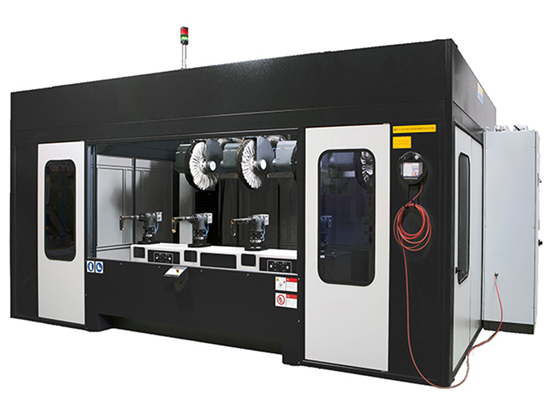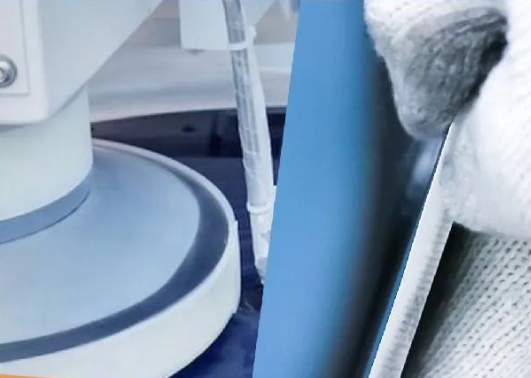
This article is also available in the following languages:
繁體中文
During the use of the car it is inevitable that it will be subject to some external influence which will cause damage to the surface of the body. Here are five common situations:

Swirl marks in car maintenance and care refer to subtle circular or spiral marks visible on the surface of a car’s paint. These markings are often caused by incorrect polishing techniques, improper car washing, or other improper handling. When light is cast on the finish, these marks create a noticeable optical effect that affects the appearance and overall gloss of the finish. To remove swirl marks, it is often necessary to apply the correct polishing and polishing treatment.
Deep marring in auto care are severe or deep scratches on the paint surface of a car. These wear and tear can be caused by rubbing, rubbing, or other factors that chafe the surface. Deep wear may require more time and skill to repair than the average minor blemish, and sometimes even professional auto repair and reconditioning work to repair serious damage.
In car care, deep scratch is a severe or deep scratch on the paint surface of a car. These wear and tear may be caused by scraping or other factors that chafe the surface. Deep wear may require more time and skill to repair than the average minor blemish, and sometimes even professional auto repair and reconditioning work to repair serious damage.
Acid & Water Etching in the automotive care or coating field, this refers to corrosion or etching of automotive finishes caused by acidic substances or water. Acid substances (such as acid rain or chemicals) and water may cause varying degrees of damage to the finish, forming spots, marks, water marks, or corrosion, reducing the quality and appearance of the finish. Repairing such etchings often requires professional handling and restoration techniques, and sometimes even repainting to repair damaged areas.
Buffer marks usually refers to a mark or imperfection left by the use of a car polisher. In Chinese, it can be translated as “polishing machine polishing pattern” or “polishing ring pattern”. These marks are usually caused by improper operation of a polishing machine, the use of the wrong polishing pad or product, or the application of excessive pressure. This can leave circular or linear imperfections on the surface of the car paint, affecting the gloss and appearance of the car surface.
Sometimes the depth of the more serious damage is difficult to remove by washing the car, but you can use polishing to restore the car’s bright appearance, so this article looks at how to repair polishing on car paint.
Composition of automotive paint

Automotive paint consists mainly of an electrophoretic layer, a medium paint layer, a color paint layer and a varnish layer. Electrophoretic paint films, also known as primers, are used to prevent metal rust and strengthen the bonding force of paint layers.
The medium paint film is used to provide conditions for the color paint, which can enhance the body’s embalming protection.
Color paint is the color of the car paint we see, and to protect the color paint, a coat of varnish is sprayed on the outermost layer. The polishing of the body is also for the varnish layer, and if there is damage to the color paint and paint film it must first be repaired and then polished.
Materials and tools
‧ Polishing machine: Select the correct rotation speed and polishing pad.
‧ Polishing pad : Hardness and color as required.
‧ Polish products: include grinding, polishing and sealing wax products.
‧ Cleaning materials: towels, car wash and detergent.
‧ Covering material: Use masking tape or paper to protect the non-painted areas around the vehicle.
Regarding the above material, we will do a project article on the presentation shortly, please focus on our public number.
Polishing steps
Step 1, wash the car
Use a water gun and detergent to clean the body to remove surface dust, dirt, and other dirt.

Step 2, sanding
The amount of sand usually used for grinding is between P1000 and P3000. The figures represent different levels of sanding fineness, where P1000 corresponds to coarser sandpaper and P3000 is more dedicated.
In general, the dedication of sanding and its corresponding uses are summarized as follows:
P1000 to P1500: suitable for removing deep scratches, repairing minor wear and preparing surfaces for subsequent grinding and polishing.
P2000 to P3000: For more detailed sanding work, remove the marks made by previous grades of sandpaper and prepare the surface for polishing or embellish.
Special care should be taken with the grinding of automotive paint to ensure that the correct steps and the correct techniques are carried out to avoid damage to the paint. It is best to have some knowledge of the specific vehicle surface and grinding requirements before grinding, and it is also best to operate under the guidance of an experienced professional or someone with experience in this area.

Step 3, Polishing
Use a hand-held polisher with a sponge/wool plate + our finish polish to remove sand marks and throw the paint film out of the mirror light so the body can recover its bright shine.


Consumables mentioned in the above scheme are welcome for consultation and cooperation with individual users or dealers.





